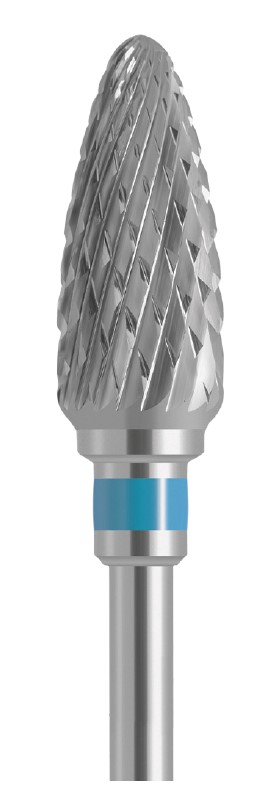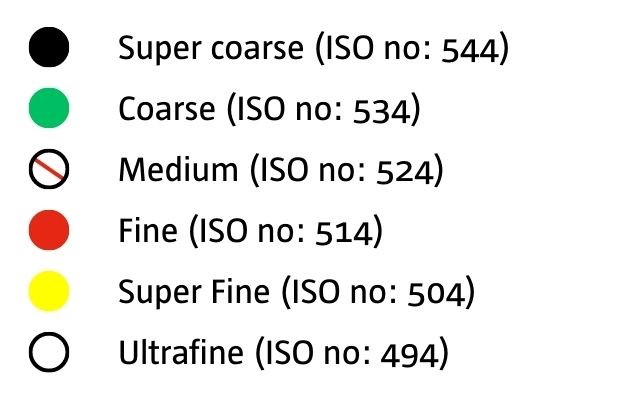
Our Definitive Guide to Dental Burs
Dental burs are an essential part of any dentist’s arsenal. Used for effortlessly removing hard and soft tissues in the mouth, burs are rotary instruments that come in a wide range of shapes, sizes and grits. Each bur typically features multiple cutting edges as well as two or more sharp-edge blades.
Having evolved from basic cutting devices, burs are now used alongside state-of-the-art dental handpieces and can remove materials such as tooth enamel and bone with minimum effort. They can also be used for gentler procedures such as polishing teeth.
Traditionally, burs consist of three parts; the shank, the neck and the head.
What is a Dental Bur?

The shank is the longest part of the bur and attaches securely into the dental handpiece.
There are three types of bur shank:
- Handpiece burs (HP): Larger, long straight shank types and are used on slow speed handpieces
- Right angle (RA): Also referred to as latch-type, these are used with low-speed contra-angle handpieces
- Friction grip (FG): These are used with high-speed handpieces
The neck connects the shank to the head and can vary in length, depending on the purpose of the bur.
The head contains blades which rotate to cut hard and soft tissue in the mouth.
The use of each bur is determined by the angle and positioning of the cutting blades and the shape of the head.
What are the Different Types of Dental Bur?
Dental burs are available in a myriad of high-quality materials, with stainless steel, tungsten carbide and diamond grit amongst the most widely used. The material used to make the bur is determined by the purpose of the tool.
Steel Burs
Renowned for their flexibility and edge retention, steel burs are ideal for removing dentin and cavity preparation. Often made from heat-treated alloy steels, these burs provide strength and reliability while minimising handpiece vibration – ideal for reducing patient discomfort.

Tungsten Carbide Burs
Tungsten carbide burs make highly effective cutting tools, but can also be used for more delicate tooth smoothing procedures thanks to their unrivalled precision.
Three times harder than steel equivalents, tungsten carbide burs offer faster, smoother performance, and are vibration-free, providing greater patient comfort and significantly reduced operative times.
Most commonly used when trimming and finishing composite restorations, Tungsten carbide burs are blessed with a long working life and minimal debris build-up during use.

Diamond Burs
Commonly used with high-speed handpieces, diamond dental burs are exceptionally good at grinding away enamel and bone. The coarse nature of the material leaves behind a rough surface.
Each bur is formed by tightly bonding diamond partials onto a substrate. The compacted surface offers pinpoint accuracy, allowing for faster and smoother cuts, perfect for crown and veneer procedures. However, diamond burs do have a shorter lifespan than other burs and their cutting efficiency can suffer after repeated sterilisation.

Classification of Dental Burs
There are a number of ways in which dental burs can be classified. These include:
- Shape
- Grit size
- Diameter
All burs can be identified using the ISO Numbering System.
ISO Numbering System
You may notice that every bur has its own unique 15-digit code; this is known as an ISO number.
This code number is broken down into six sections:

Which will look like this:

Dental Bur Shapes
Dental burs can be classified by shape. Commonly, these shapes are referred to as ‘round’, ‘pear’, ‘flat-end’ and ‘cross-cut’. Each shape is defined using the ISO system.
The shape of a bur determines its use.
- Round burs: Ideal for excavation of tooth decay and cavity preparation; can create access points ahead of extraction
- Pear burs: Most commonly used for excavating, trimming and finishing; can create undercuts for filling materials
- Flat-end burs: For the removal and alteration of tooth structure; can be used for rotary intra-oral tooth preparation and adjustment
- Cross-cut burs: For when precision is required; can significantly decrease the build-up of debris during procedures
Dental Bur Grit Size
Dental burs come in varying grit (or grain) sizes. The finer the grit, the less abrasive the bur will be on hard tissues.
In general, coarser burs are used for removing materials in the mouth while finer grits are intended for polishing and finishing work.
The level of abrasiveness is usually indicated by a coloured band around a bur’s shaft.


Dental Bur Head Diameter
Another classification method is the diameter of a bur’s head.
Smaller burs are used for more intricate work, whereas burs with larger heads are used in oral surgery.
Buy Dental Burs Online
At Swallow Dental, we offer an extensive range of high-quality, ultra-robust dental burs, cutters and kits in FA, RA and HP fittings.
Each piece of equipment is specially designed to improve the quality of care in your dental practice.
Take a look at our dental burs or contact our dedicated Customer Care team for more information on the dental burs we stock.
